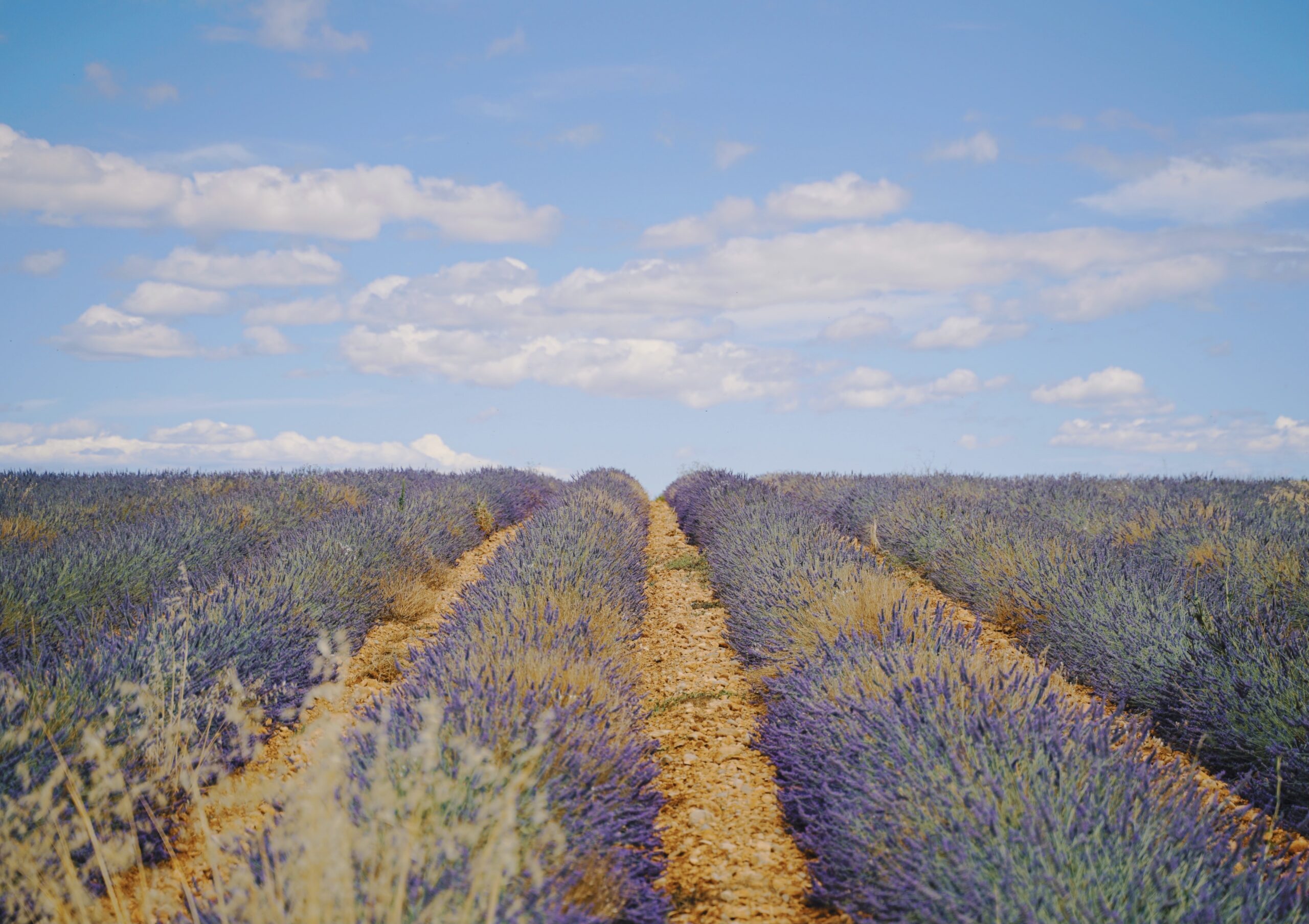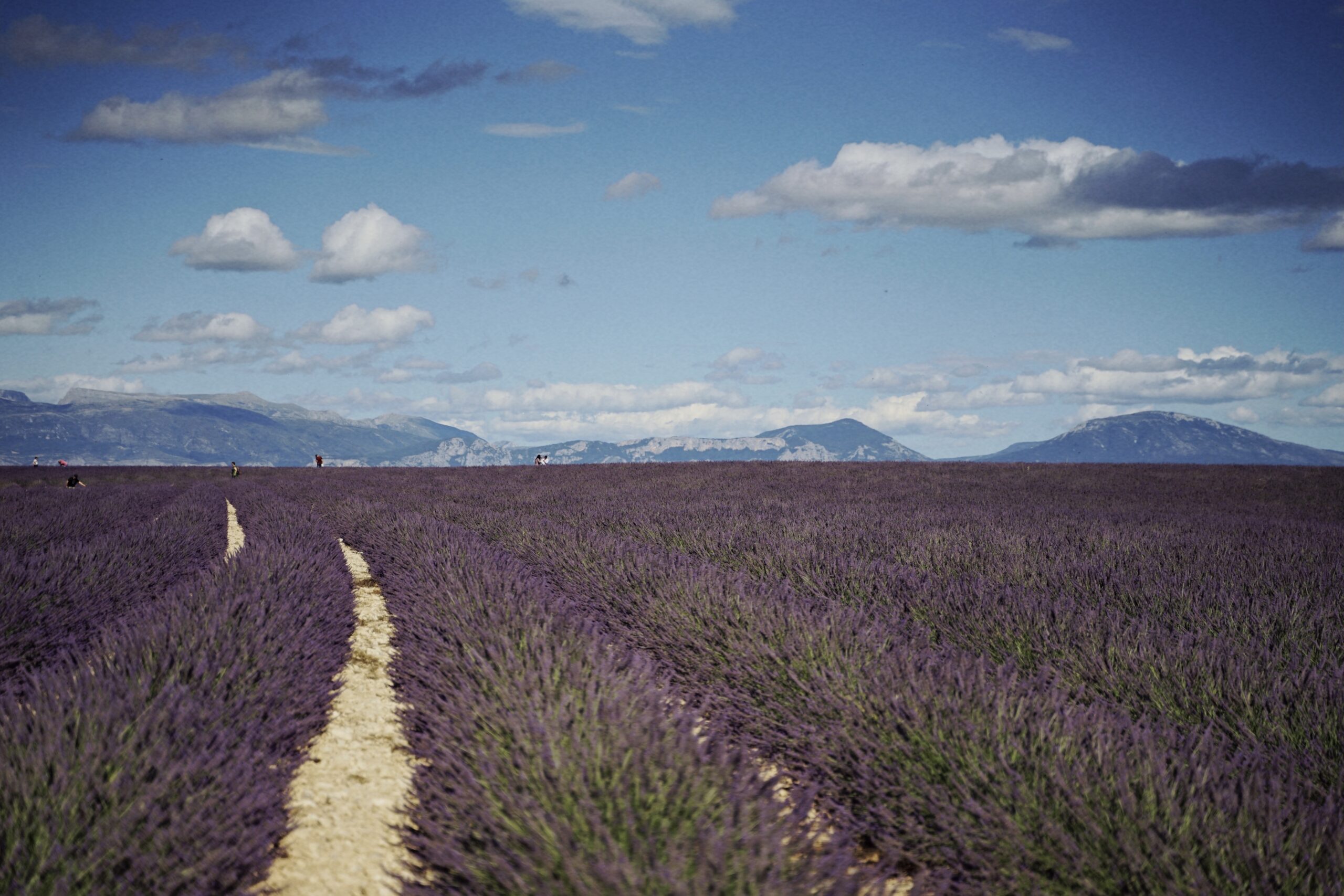Alright, so picture this – you’re in a cozy kitchen, surrounded by the warm aromas of a delicious meal. As you take a deep breath, you can’t help but be captivated by the heavenly scent lingering in the air. What’s the secret behind this fragrant masterpiece? It’s none other than Herbs de Provence. This delightful blend of herbs hails from the picturesque region of Provence in France, where it has been a culinary staple for centuries. In this article, we’ll uncover the origins, flavor profile, and versatile uses of Herbs de Provence, leaving you inspired to experiment and elevate your own cooking with this delightful blend. So, let’s embark on a flavorful journey that will awaken your taste buds and transport you to the enchanting landscapes of Provence.

What is Herbs de Provence
Herbs de Provence is a well-known and beloved blend of dried herbs originating from the Provence region in southeastern France. This aromatic mixture is a staple in French cuisine and is used to add flavor and depth to a wide variety of dishes. The blend typically consists of a combination of dried herbs such as rosemary, thyme, savory, marjoram, and oregano, but can also include other herbs like basil, tarragon, and lavender. It is known for its fragrant and distinctive taste, which captures the essence of the beautiful Provençal countryside.
Origin and history of Herbs de Provence
The origins of Herbs de Provence can be traced back to the bountiful fields and gardens of the Provence region in France. This culinary tradition has its roots in the region’s rich agricultural heritage, where the cultivation of fragrant herbs has been practiced for centuries. The combination of herbs used in Herbs de Provence reflects the flavors and aromas prominent in Provençal cuisine.
The exact origins of the specific blend known as “Herbs de Provence” are somewhat unclear. However, it gained popularity in the 1970s when a spice company began commercially packaging and selling the blend under this name. Since then, it has become widely recognized and is now a staple in both French and international kitchens.
Composition and ingredients
The composition of Herbs de Provence can vary slightly depending on the specific blend or brand. However, the core herbs typically found in the mixture include rosemary, thyme, savory, marjoram, and oregano. These herbs collectively create a unique and harmonious flavor profile that is both earthy and aromatic.
In addition to the main herbs, variations of Herbs de Provence may also include other ingredients such as basil, tarragon, or lavender. The addition of lavender, in particular, gives the blend a distinctive floral note that sets it apart from other herb mixtures.
Variations and substitutions
While the traditional blend of Herbs de Provence includes specific herbs, there is room for variation and personalization. Some variations may include additional herbs like basil or fennel seeds, adding an extra layer of flavor complexity. These variations often reflect personal preferences or regional influences.
If you do not have access to a pre-made Herbs de Provence blend, it is still possible to create a similar flavor profile using individual herbs. Simply combine dried rosemary, thyme, marjoram, and savory in equal portions to create your own version of Herbs de Provence. While it may lack the specific nuances of a traditional blend, it can still add a delightful Provençal touch to your dishes.
Culinary Uses
Traditional French dishes that use Herbs de Provence
In traditional French cuisine, Herbs de Provence is an essential ingredient in many classic dishes. It imparts a distinct flavor and aroma that enhances the overall taste experience. Some of the most popular French dishes that utilize Herbs de Provence include:
-
Ratatouille: This flavorful vegetable stew combines eggplant, zucchini, bell peppers, and tomatoes, with Herbs de Provence adding a delightful herbal undertone.
-
Bouillabaisse: A traditional Provençal fish soup that features an array of seafood simmered with onions, tomatoes, garlic, and a generous amount of Herbs de Provence for a fragrant and savory base.
-
Coq au Vin: This iconic French chicken dish is braised with red wine, onions, mushrooms, and Herbs de Provence, creating a deliciously rich and aromatic sauce.
-
Herbes de Provence Roasted Chicken: A simple yet flavorful way to prepare chicken, where the bird is rubbed with a mixture of Herbs de Provence, garlic, salt, and pepper, before being roasted to perfection.
Creative uses in modern cuisine
While Herbs de Provence is deeply rooted in traditional French cuisine, it has also found its way into modern and innovative culinary creations. Chefs and home cooks alike have discovered the versatility of this herb blend and have started incorporating it in unexpected ways. Some creative uses of Herbs de Provence include:
-
Herb-infused oils and butters: Herbs de Provence can be mixed with oils or softened butter to create delectable spreads or dressings. This adds a burst of herbal flavor to bread, vegetables, or grilled meat.
-
Seasoning for roasted vegetables: Tossing a generous amount of Herbs de Provence with vegetables such as potatoes, carrots, and Brussels sprouts before roasting them creates a delightful blend of flavors that complements the natural sweetness of the vegetables.
-
Herbed marinades: Use Herbs de Provence as a key ingredient in marinades for meat or poultry. The herbs infuse the meat with their aromatic essence, resulting in tender and flavorful dishes.
-
Herb-infused salts and sugars: Make your own flavored salts or sugars by combining Herbs de Provence with salt or sugar crystals. These can be sprinkled over dishes or used in baking for a unique twist.
Pairings and flavor profiles
The flavor profile of Herbs de Provence is a harmonious combination of earthy, floral, and citrusy notes. The individual herbs each contribute to this unique flavor profile, resulting in a well-balanced blend. The versatility of Herbs de Provence allows it to pair well with a variety of ingredients, enhancing their natural flavors. Some popular pairings for Herbs de Provence include:
-
Meats: Herbs de Provence complements a wide range of meats, including chicken, beef, lamb, and pork. Whether used as a rub, a seasoning, or in a marinade, it adds a depth of flavor that elevates the dish.
-
Vegetables: The herbal flavors of Herbs de Provence harmonize beautifully with roasted or grilled vegetables such as eggplant, zucchini, tomatoes, and peppers. It adds a delightful aromatic touch to vegetable-based dishes.
-
Mediterranean cuisine: Herbs de Provence is often used in dishes from the Mediterranean region and pairs well with ingredients commonly found in this style of cooking, including olive oil, garlic, lemon, and olives.
-
Breads and pastries: Incorporating Herbs de Provence into bread dough or pastry crusts can add a unique and fragrant twist to your baked goods. It pairs especially well with rustic artisan breads.
The delightful combination of flavors and the versatility of Herbs de Provence make it a valuable addition to any kitchen, whether you’re a seasoned chef or a home cook looking to experiment with new flavors.

Health Benefits
Antioxidant properties
Many of the herbs found in Herbs de Provence have high levels of antioxidants, which can help protect the body against free radicals. Rosemary, thyme, and oregano, in particular, are known for their antioxidant properties. These compounds have been linked to reducing the risk of chronic diseases, such as heart disease and certain types of cancer.
Anti-inflammatory effects
Some of the herbs in Herbs de Provence, such as rosemary and thyme, possess anti-inflammatory properties. Chronic inflammation in the body has been associated with various diseases, including rheumatoid arthritis and inflammatory bowel disease. Incorporating Herbs de Provence into your meals may help combat inflammation and promote better overall health.
Digestive aid
Certain herbs found in Herbs de Provence, such as thyme and marjoram, have been traditionally used to support digestion. These herbs can help stimulate the production of digestive enzymes, aiding in the breakdown of food and promoting better nutrient absorption. Including Herbs de Provence in your meals may contribute to improved digestion and gastrointestinal health.
While the health benefits of Herbs de Provence are certainly appealing, it’s important to note that these benefits are typically associated with the individual herbs in the blend and may vary depending on the specific composition and quantity used.
How to Use and Store Herbs de Provence
Preparing homemade Herbs de Provence blend
Creating your own homemade Herbs de Provence blend allows you to have full control over the ingredients and flavor profile. Here is a simple recipe for a classic Herbs de Provence blend:
- 2 tablespoons dried rosemary
- 2 tablespoons dried thyme
- 2 tablespoons dried savory
- 2 tablespoons dried marjoram
- 2 tablespoons dried oregano
- 1 tablespoon dried basil (optional)
- 1 tablespoon dried tarragon (optional)
- 1 tablespoon dried lavender (optional)
Combine all the herbs in a bowl and mix well. Store the blend in an airtight container in a cool, dark place until ready to use.
Feel free to adjust the quantities and add or omit herbs based on personal preferences or availability. Experimenting with different combinations can help you discover your own signature Herbs de Provence blend.
Using Herbs de Provence in cooking
Incorporating Herbs de Provence into your cooking is easy and can add a touch of elegance and complexity to your dishes. Here are a few ways to use Herbs de Provence in your culinary endeavors:
-
Season meat and poultry: Rub Herbs de Provence onto your desired meat or poultry before roasting, grilling, or sautéing. The blend will infuse the meat with its aromatic flavors, turning a simple dish into a culinary masterpiece.
-
Enhance roasted vegetables: Toss your favorite vegetables with Herbs de Provence, olive oil, and a sprinkle of salt before roasting them in the oven. The herbs will complement the natural sweetness of the vegetables, adding depth and a touch of Provence to the dish.
-
Add to sauces and dressings: Stir Herbs de Provence into sauces, dressings, or marinades to enhance their flavor profile. Whether it’s a vinaigrette for a refreshing salad or a creamy sauce for pasta, the herbs will elevate the taste and take your dish to the next level.
-
Sprinkle over breads and pizzas: Before baking bread or pizza, sprinkle Herbs de Provence on top for a burst of flavor. The herbs will infuse into the dough as it cooks, creating a fragrant and delicious result.
Proper storage and shelf life
To ensure the longevity and quality of your Herbs de Provence, proper storage is key. Here are some tips for storing your blend:
-
Store in airtight containers: Transfer your Herbs de Provence blend to airtight containers, such as glass jars or sealed plastic containers. These will help lock in the flavors and prevent moisture from entering, which can cause the herbs to lose their potency.
-
Keep away from heat and light: Store your Herbs de Provence blend in a cool, dark place. Heat and light can degrade the herbs and compromise their flavor. Avoid storing the blend near the stove or in direct sunlight.
-
Check for freshness: Over time, dried herbs lose their potency and flavor. To ensure that your Herbs de Provence is still fresh, give it a sniff. If the aroma is weak or stale, it’s time to replenish your supply.
When stored correctly, Herbs de Provence can maintain its flavor and aroma for up to a year. However, for optimal freshness and flavor, it is recommended to use the blend within six months. Regularly checking for freshness will ensure that you are getting the best possible experience from your Herbs de Provence.

Where to Buy Herbs de Provence
Local spice shops and gourmet stores
One of the best places to find quality Herbs de Provence is at local spice shops or gourmet stores that specialize in high-quality ingredients. These specialty stores often carry a wide range of herbs and spices, including blends like Herbs de Provence. The advantage of shopping at these stores is the opportunity to talk to knowledgeable staff who can guide you in selecting the best blend for your culinary needs.
Online sources and e-commerce websites
Another convenient option for purchasing Herbs de Provence is through online sources and e-commerce websites. Numerous online retailers offer a variety of Herbs de Provence blends, allowing you to compare different brands and compositions. When buying online, be sure to read customer reviews and check for certifications or quality guarantees to ensure that you are purchasing a reputable product.
Growing and harvesting your own herbs
For those who enjoy the process of growing their own herbs, cultivating and harvesting the individual herbs to create your own Herbs de Provence blend can be a rewarding experience. Many of the herbs in Herbs de Provence, such as rosemary, thyme, and oregano, are relatively easy to grow in home gardens or even in pots on a balcony or windowsill. This way, you have complete control over the quality and freshness of the herbs used in your blend.
Growing your own herbs also allows for customization and experimentation, as you can adjust the blend to your personal preferences by adding or omitting certain herbs. For a truly authentic Provençal experience, consider growing some lavender alongside your other herbs to incorporate into your homemade blend.
Traditional Provençal Blend vs. Commercial Varieties
Authenticity and quality of traditional blend
The traditional Provençal blend of Herbs de Provence holds a special place in culinary history and is often regarded as the most authentic representation of the flavor profile associated with the region. When purchasing a traditional blend, it is essential to look for reputable brands that source high-quality ingredients and follow traditional recipes.
Authentic blends often contain the core herbs authentic to the Provençal region, including rosemary, thyme, savory, marjoram, and oregano. The inclusion of lavender adds a unique floral note, which is a characteristic distinguishing feature of a traditional blend. These quality blends are carefully balanced for optimal flavor and are the perfect choice for those who value authenticity and appreciate the true essence of Provençal cuisine.
Differences and variations in commercial brands
While traditional blends hold their own charm, commercial brands offer a range of variations that cater to different tastes and preferences. These commercial blends may deviate from the traditional recipe, either by omitting certain herbs or including additional ones.
It’s important to read the ingredient list and descriptions to determine the flavor profile of the specific blend you are interested in. Some commercial blends may focus on emphasizing certain herbs, such as rosemary or lavender, while others may include additional ingredients, like basil or tarragon, to create a unique twist. Exploring different commercial brands and variations can provide exciting and innovative options for your culinary adventures.
Making informed choices while purchasing
When purchasing Herbs de Provence, it is essential to consider factors such as quality, authenticity, and personal preferences. Here are some tips to help you make informed choices:
-
Read the ingredient list: Check the list of herbs included in the blend to ensure that it aligns with your expectations and desired flavor profile.
-
Look for reputable brands: Research brands known for their commitment to sourcing high-quality ingredients and ensuring authenticity. Customer reviews and certifications can help guide you in making an informed decision.
-
Consider your preferences: Determine whether you prefer a blend that closely adheres to traditional recipes or one that offers a unique twist. Some blends may have a stronger emphasis on certain herbs or include additional ingredients to create a distinctive flavor profile.
By considering these factors, you can choose the Herbs de Provence blend that best suits your culinary preferences and allows you to explore the authentic flavors of the Provençal region.
Cultural Significance and Traditions
Herbs de Provence as an essential part of Provençal cuisine
Herbs de Provence is deeply rooted in the culinary heritage of the Provence region in France. It is an essential ingredient in traditional Provençal cuisine and plays a significant role in shaping the flavors and aromas associated with the region. Generations of Provençal cooks have passed down recipes that rely on the distinctive blend, making it an integral part of the local food culture.
Symbolism in Provençal culture and festivals
In addition to its culinary significance, Herbs de Provence holds symbolic value in Provençal culture. The blend is often associated with the vibrant landscapes and breathtaking scenery of the Provence region. The fragrant herbs encapsulate the essence of Provençal life, evoking images of sun-drenched fields, Mediterranean flora, and the aromatic breeze that sweeps through the countryside.
Throughout the year, Provençal festivals and events celebrate the cultural heritage of the region, with Herbs de Provence often taking center stage. Festivals dedicated to herbs and spices showcase the traditional blend, offering visitors the opportunity to sample and learn about the many uses and traditions associated with Herbs de Provence.
Celebrations and events featuring Herbs de Provence
The Provençal calendar is filled with celebrations and events that honor the rich culinary traditions of the region. Some of these festivities feature the use of Herbs de Provence in various ways:
-
Fête de l’Herbe: This celebration highlights the importance of herbs in Provençal cuisine and showcases the diverse uses and flavors of Herbs de Provence. Visitors can indulge in tastings, attend cooking demonstrations, and explore the history and cultural significance of the iconic blend.
-
Lavender Festivals: The breathtaking lavender fields of the Provence region are a major attraction for locals and tourists alike. Lavender festivals celebrate the beauty and versatility of this iconic herb, often incorporating Herbs de Provence into various culinary demonstrations and events.
-
Herb and Spice Markets: Throughout the year, bustling markets in Provençal towns offer an array of herbs, spices, and blends like Herbs de Provence. These markets are a feast for the senses, where visitors can immerse themselves in the flavors, scents, and cultural traditions associated with the region.
These celebrations serve as a testament to the cultural significance and cherished traditions surrounding Herbs de Provence in the Provençal way of life.
Herbs de Provence in Other Cuisines
Adaptations in Mediterranean and European cuisines
While Herbs de Provence is strongly associated with Provençal cuisine, its influence extends beyond the borders of the region. The flavors and aromas of this herb blend have found their way into various Mediterranean and European dishes, adding a touch of Provence to diverse culinary traditions.
In Mediterranean cuisines such as Italian, Spanish, and Greek, Herbs de Provence is often used as a seasoning for roasted meats, grilled vegetables, and tomato-based sauces. It blends seamlessly with the Mediterranean flavor palette, creating a delightful fusion of culinary traditions.
In European cuisines, Herbs de Provence is a popular addition to dishes like roasted potatoes, stews, and marinades. It introduces a distinct herbal note that complements the hearty and robust flavors often associated with European comfort foods.
Incorporation in global cooking styles
The versatile nature of Herbs de Provence has allowed it to transcend cultural and regional boundaries, making its way into global cooking styles. Chefs and home cooks around the world have embraced this flavorful blend, incorporating it into their own culinary creations.
In Asian cuisines, such as Chinese and Thai, Herbs de Provence can be used to add a unique twist to traditional dishes. It can infuse stir-fries, soups, and sauces with an unexpected complexity and depth of flavor.
Even in fusion and experimental cooking, Herbs de Provence has found a place. Chefs often use it to bridge the gap between different flavor profiles, creating innovative and unexpected combinations that surprise and delight the palate.
The adaptability and versatility of Herbs de Provence showcase its ability to harmonize with diverse ingredients and cooking styles, seamlessly integrating the flavors of Provence into global cuisine.
Beyond Culinary Applications
Aromatic uses in potpourri and fragrance
Herbs de Provence isn’t limited to culinary uses alone. The fragrant herbs in the blend are often employed in aromatic applications, such as potpourri and natural air fresheners. The mixture can be combined with dried flowers, citrus peels, or other scented ingredients to create a delightful and refreshing blend that can fill a room with the scents of Provence.
Therapeutic and medicinal properties
Several of the individual herbs found in Herbs de Provence have long been used in traditional medicine for their therapeutic properties. Rosemary, for example, is believed to improve memory and focus, while thyme has been used to soothe coughs and respiratory ailments.
While the concentration of individual herbs in Herbs de Provence may not be sufficient to provide significant therapeutic effects, incorporating this aromatic blend into your daily life can contribute to a sense of well-being.
Incorporation in beauty and natural skincare
The aromatic and medicinal properties of Herbs de Provence have also found their way into the realm of beauty and skincare. Essential oils extracted from herbs such as lavender and rosemary are often used in natural skincare products for their soothing and rejuvenating properties. These products may include soaps, lotions, and bath oils, allowing you to indulge in the fragrances and benefits of Herbs de Provence beyond the kitchen.
Conclusion
Herbs de Provence is a culinary treasure that captures the essence of the Provençal region. With its distinct flavor profile and versatile uses, the blend has gained popularity both within and beyond France. From traditional French dishes to creative culinary experiments, Herbs de Provence adds a touch of elegance and sophistication to any recipe.
Beyond its culinary applications, Herbs de Provence carries cultural significance and is deeply rooted in Provençal traditions. It is a symbol of the vibrant landscapes and traditions of the region, celebrated in festivals and events throughout the year.
While it is readily available in various blends and brands, both traditional and commercial, making informed choices when purchasing Herbs de Provence ensures that you experience the true essence and flavors of this beloved herb blend.
So go ahead and sprinkle some Herbs de Provence on your roasted vegetables, rub it onto your meats, or add it to your sauces. Allow the aromatic blend to transport you to the sun-kissed fields of Provence and savor the unique flavors that have made Herbs de Provence a beloved staple in kitchens around the world.
